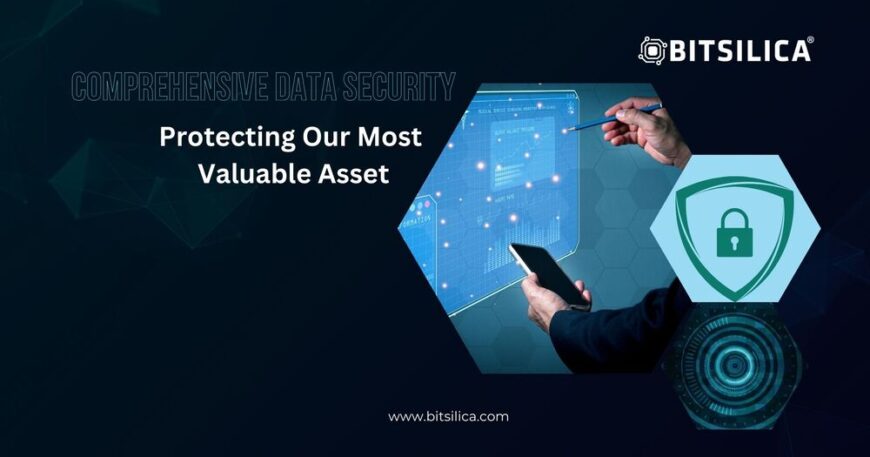Comprehensive Data Security: Protecting Our Most Valuable Asset
Introduction
Data security is the practice of protecting digital information from unauthorized access, corruption, or theft throughout its lifecycle. Given the increasing number of data breaches and cyber attacks, it’s crucial to understand and implement effective data security measures. This blog post will cover essential data security practices and provide real-world examples to illustrate their importance.
Understanding Data Security
Data security involves safeguarding digital information through various strategies and technologies, ensuring its confidentiality, integrity, and availability.
Key Components of Data Security:
• Confidentiality: Ensuring that sensitive information is accessed only by authorized individuals.
• Integrity: Maintaining the accuracy and completeness of data.
• Availability: Ensuring that data is accessible to authorized users when needed.
Example: In 2020, Marriott International suffered a data breach affecting over 5.2 million guests, highlighting the importance of robust data security measures to protect sensitive information.
Implementing Access Controls
Access controls limit who can view or use resources in a computing environment, ensuring that only authorized individuals have access to sensitive data.
Best Practices:
• Role-Based Access Control (RBAC): Assign access rights based on roles within the organization.
• Principle of Least Privilege: Grant users the minimum access necessary to perform their duties.
• Multi-Factor Authentication (MFA): Use MFA to add an additional layer of security.
Example: The Target data breach in 2013, which exposed 40 million credit and debit card records, was partly due to inadequate access controls, allowing attackers to exploit third-party vendor credentials.
Encrypting Data
Encryption transforms data into a secure format that can only be read with the proper decryption key, protecting it from unauthorized access.
Best Practices:
• Data at Rest: Encrypt sensitive data stored on physical media or in databases.
• Data in Transit: Use encryption protocols like TLS/SSL to protect data during transmission.
Example: The 2017 Equifax breach, which exposed personal information of 147 million people, was exacerbated by inadequate encryption practices, underscoring the need for robust encryption.
Regular Software Updates and Patching
Keeping software up to date is crucial for protecting systems from vulnerabilities that can be exploited by attackers.
Best Practices:
• Automatic Updates: Enable automatic updates for critical software and systems.
• Patch Management: Regularly apply security patches and updates to all software.
Example: The WannaCry ransomware attack in 2017 exploited a vulnerability in outdated Windows systems, affecting over 200,000 computers worldwide. Prompt patching could have prevented many of these infections.
Data Backup and Recovery
Regular data backups and a solid recovery plan are essential for mitigating the impact of data loss or corruption due to cyber attacks or system failures.
Best Practices:
• Regular Backups: Schedule regular backups of all critical data.
• Offsite Storage: Store backups in a secure, offsite location to protect against physical damage.
• Recovery Testing: Regularly test data recovery procedures to ensure they work effectively.
Example: In 2021, Colonial Pipeline suffered a ransomware attack that led to significant operational disruptions. The company’s ability to recover quickly was aided by effective data backup and recovery processes.
Monitoring and Logging
Continuous monitoring and logging of network and system activities help detect and respond to potential security incidents.
Best Practices:
• Intrusion Detection Systems (IDS): Use IDS to monitor network traffic for suspicious activity.
• Log Management: Maintain and regularly review logs to identify and investigate anomalies.
• Security Information and Event Management (SIEM): Implement SIEM solutions to aggregate and analyze log data in real-time.
Example: In 2020, the SolarWinds attack went undetected for months partly due to insufficient monitoring and logging, emphasizing the need for robust surveillance measures.
Employee Training and Awareness
Human error is a leading cause of data breaches. Regular training and awareness programs can help employees recognize and avoid common security threats.
Best Practices:
• Regular Training: Conduct ongoing security training sessions for all employees.
• Phishing Simulations: Use phishing simulations to educate employees on recognizing and responding to phishing attacks.
• Security Policies: Ensure all employees understand and follow the organization’s data security policies.
Example: A 2019 report by Verizon found that 30% of data breaches involved internal actors, highlighting the importance of employee training in preventing data security incidents.
Conclusion
Data security is a critical aspect of protecting sensitive information and maintaining organizational integrity. By implementing robust access controls, encryption, regular updates, backups, monitoring, and employee training, we can significantly enhance our data security posture and protect against a wide range of cyber threats.





